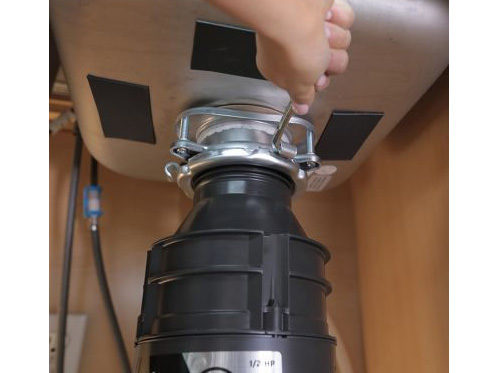The busiest plumbing day of the year to clean kitchen sink drains is the day after Thanksgiving. The “culprit” is typically the garbage disposer because it failed to do a good job of grinding waste food.
Some may think the culprit is “that person” who helped with cleaning the dishes and put excess food down the disposer that “should never be put down the sink drain because it always plugs”. Odds are we have all heard similar comments.
The good news is there do not have to be any “culprits” whatsoever because garbage disposer technology has improved dramatically. The reality is a garbage disposer should grind food wastes to the point we should never have to worry again. We can “dispose of both culprits” (pun intended)!
It’s important to know garbage disposers are not created equal. There is a vast difference from the very basic noisy disposers that barely grind food, to the quality disposers that do a great job. It’s up to the consumers to decide if they want a “culprit” disposer or have a disposer that will quietly grind up rib bones!
Yes, it is possible to grind up rib bones with the patented Insinkerator MultiGrind technology. The Pro 1100XL and Pro 1000LP 3-grind technology grind up corncobs, celery, potato peels, and so on. It grinds food in three stages. The 1st and 2nd stages grind food waste materials into smaller particles. The 3rd stage grinds the food into a fine waste that is more of a liquid consistency than a solid.
The Insinkerator PRO Series food waste disposers have developed a reputation for being the best disposers. There are six basic models with a variety of features. There are even jam controls that increase the motor torque by 500% to break through the toughest jams automatically. Warranties are from 4 years to 12 years. They have various stages of quality that even include sound ratings.
The Insinkerator disposers are quieter because they have four patented features that include a thick anti-vibration mounting ring, a Quiet Collar sink baffle, and multi-layer sound insulation on the body of the disposer, and an anti-vibration tailpipe mount. Their base unit is 40% quieter than other standard disposers. Their best model is five times quieter than a standard disposer!
There are garbage disposers for all applications and needs. There is even a garbage disposer for septic tanks. The Insinkerator Septic Assist disposer was designed specifically for homes with septic tank systems. It releases a liquid Bio-Charge during operation. The Bio-Charge has a citrus scent and helps control odors from the sink drain.
It’s a good practice to verify what foods your garbage disposer is capable of grinding. If it’s capable of grinding small bones or food pits, then do that to get a scouring action to help clean the inside of the grinding chamber. Ice can be used too, but the scouring results are not as good.
Grease should never be put down a sink drain. If unavoidable, use cold water to wash the grease down rather than hot water. That keeps the grease congealed and helps prevent it from settling out on drain piping. It’s best to collect grease in a can or jar; then put it in the garbage can.
Make sure to run cold water during and after operating disposers to help wash food particles past the kitchen discharge piping. Grinding peelings from citrus fruits will freshen up drain smells.
Recycling food waste through a garbage disposer is an environmentally friendly alternative to transporting food waste to landfills. This also helps reduce greenhouse gas emissions.
Food waste is recycled into renewable energy at the City of Lincoln Wastewater plant by utilizing digesters to capture the Hydrogen Sulfide gas. Some of the solid wastes are also sold to nearby farms as fertilizers. The City of Lincoln Wastewater Department has been environmentally proactive and a good neighbor!
Utilizing a quality garbage disposer should eliminate all blockages from a kitchen sink if the discharge piping is properly installed to meet acceptable workmanship standards. It’s important to note that older drain piping was typically 1 ½” in diameter and more susceptible to blockage. Consider replacing it with 2” piping that is required by City Code today.
If you have experienced kitchen drain piping blockages, it’s important to make sure your garbage disposer is a quality unit. Blockages can be avoided. It’s a great time to get rid of that “culprit” disposer and reduce the risks of sewer blockages.

